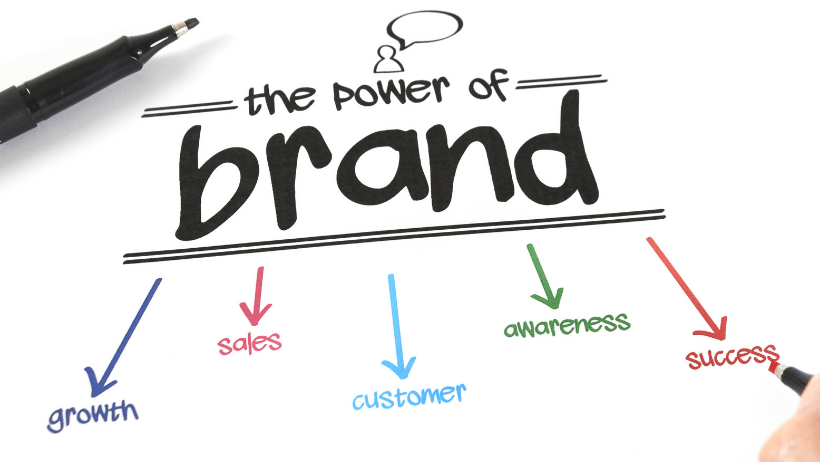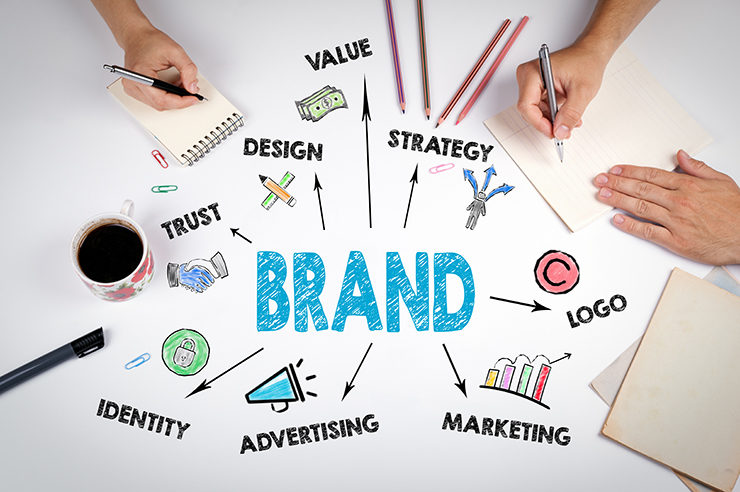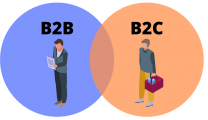What is a brand persona?
To introduce you to a brand persona, we couldn’t do it better than Apple did in 2006 with its “Get a Mac” campaign.
It perfectly encapsulates the concept in a series of short videos that present the interaction of two characters: a Mac and a PC guys. The quick video below is a masterclass in building brand personas.
The characteristics of each brand are personified.
That would be the general concept of a brand persona. It’s what people perceive in your brand every time they interact with its products, social media content, and customer relationships department.
Brand personas are strategic for businesses because they create a representation of the key aspects of your company.
Through the marketing department’s understanding of user data, good brand personas look like someone your customer would like to interact with in real life.
Authenticity is essential for a brand persona that works since it helps establish trust and maintain a good relationship with customers throughout their life cycle.
How to build a brand persona?
Now that you fully understand what a brand persona is, it’s time to move on to an important topic: how they are built.
After all, brands aren’t like Mac and PC guys. They don’t exist in the real world and must be created based on certain aspects of your audience.
So, let’s look into the step-by-step process of building a brand persona.

1. Understand what makes your brand
Building a brand persona and building a brand itself are very similar things when you look at them up close.
Both processes demand a greater understanding of the company’s mission, promise, essence, and pillars.
To make a brand persona for your business, start by looking at how it differs from the competition. These are the crucial things in making yours stand out.
2. Look closely to your customers
Another important thing to remember when building a brand persona is that the personification of your company should allow it to interact easily with your customer.
For this to work, the traits of the brand persona should be complementary to your buyer persona.
Therefore, study your audience’s age, what they watch on TV, and how they communicate. This will be fundamental in establishing who your brand persona is.
3. Find out who your persona is
A persona doesn’t have to be a person. An object, an image, an animal, and even a cartoonish version of your company can all be personas.
The goal is that your persona should encapsulate well your company’s traits. So, it wouldn’t be odd if an insurance company — that wants to be perceived as reliable — represented their persona as a dog of breed.
Conceptually, your persona can be anything. It’s how you map your persona’s personality and build it, developing a tone of voice, a graphic style, and other traits that matter.
“What does a company have to gain by building a brand persona?” the more goal-oriented professionals might ask.
Other than showing exactly what tone to use with customers in all interactions, a brand persona can help with a lot of your Digital Marketing KPIs.
Below, there are a few examples of how a company can benefit from a good one. You will see that it’s the path to more engagement online and offline.
Differentiate your company with a brand persona
Among the reasons to build and enhance a brand persona over the years, this is the main.
After all, marketing is all about differentiation.
There are probably at least a few companies that compete, directly or indirectly, with yours.
A brand persona can help your company build rapport with customers quickly so that it can be the chosen one in a competitive environment.
When there are two options with similar quality and benefits, customers pick up the one they most identify with. If your message resonates on a personal level, this is a point to your brand.
Show the real benefits your brand has to offer
Brand personas have the most important task: showing customers the real benefits your brand has to offer.
However, it’s much easier when you have a well-developed brand persona.
A company that can inspire, through its persona, a certain feeling in the customers, must show that its product also presents these characteristics.
For example, think about Harley-Davidson and its America-loving and freedom-seeking persona.
The brand benefits from those characteristics, and, because of this, it’s able to suggest such appeal when it comes to building powerful motorcycles.
Keep your customer closer
Nothing is more powerful in marketing than relevant data on customer’s intentions and perceptions. And brands notice that it’s much easier getting to them if they have a well-developed brand persona.
A brand persona helps you talk to your audience and be heard. It makes it easier to engage them in surveys and make them interact with your content, which will bring more relevant data to the table.
Success cases: 3 companies that excel in their brand personas
We started this article looking at a classic Apple ad, but they’re not the only company that has a great understanding of their brand persona.
Many other businesses around the world have worked hard to show off their brand personas.
Let’s look into them!
1. McDonald’s
Although many other fast-food chains gained popularity in the later decades, McDonald’s is still the most likely to pop up in your head when you think about this type of food.

There’s no other company that has a brand persona that is more familiar to most Americans.
McDonald’s is a family-friendly place where you can get convenient meals across the whole country. The brand relates to adults and little children, and it’s there for breakfast, lunch, and dinner.
All of those traits are well explored by their marketing team on social media and can be seen a mile away. Thus, you get inspired to interact and build a rapport with this fast-food giant.
2. Disney
Disney is another brand that can teach us a lot about brand personas. After all, it takes effort to become known as the most magical place on earth.
For about a century, Disney has built the idea that they can make dreams come true. They have one of the most powerful personas a marketer could think of.
3. Red Bull
Red Bull isn’t a leader only when it comes to energy drinks. The company is also known in the marketing world for its relation to customers and the experiences it provides.
Of course, their brand persona follows these footsteps and is as courageous, outgoing, and energetic as it can be.
That is why it easily interacts with both professional athletes and the party-going and upbeat audience that follows the brand on social media.
The idea that Red Bull “gives you wings” is a big part of their brand persona, making sure it shows up on every part of their communication.












Replies to This Discussion